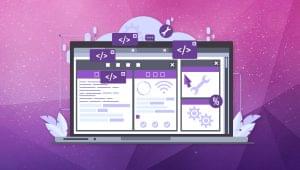HP Makes webOS Open Source: Can it Survive?
On December 9, 2011 Hewlett-Packard announced it would contribute webOS to the open source community. HP will continue to support webOS but other hardware vendors will be free to use it within their smartphones and tablets.
What is webOS?
Introduced at CES 2009, webOS is a Linux-based successor to Palm OS. Built from the ground-up, the operating system supports multi-touch, multi-tasking and cloud synchronization. The platform also offers exciting opportunities to web developers: native apps can be developed using HTML5, CSS and Javascript and released though the App Catalog or from any website.
The first device to use webOS was the Palm Pre followed shortly after by the Pixi. Reviews were mostly positive but the early handsets suffered build-quality problems. A relatively high price and lack of apps led to modest sales. Although Palm released free developer tools and documentation, few programmers were prepared to write software for a niche platform.
In April 2010, HP acquired the failing Palm company for $1.2 billion. HP had ambitious plans for webOS: it would appear in smartphones, tablets, printers and as a fast dual-boot option on Windows PCs.
The webOS-powered HP TouchPad was launched in July 2011. Reviews were mixed, sales were poor and — just seven weeks later — HP announced that it would discontinue all current hardware running webOS. 500 people were cut from the webOS division and its future was in doubt.
Where Did It Go Wrong?
HP recognized that webOS faced tough competition from iOS and Android devices. A seven week trial period seems incredibly short, but HP was already late to the smartphone party and would have needed to spend millions on marketing to dent the established players.
HP is also a Microsoft partner. WebOS would have undoubtedly damaged their relationship and was it redundant following Microsoft’s smartphone and fast-booting Windows 8 projects?
Can webOS Survive?
webOS is a great platform with potential. It doesn’t have the vendor lock-in of Apple and Microsoft products or the fragmentation encountered by Android developers.
Cynics will point out that Nokia gave Symbian to the open source community but it failed to gain traction. However, unlike Symbian, webOS is a more modern OS with good development tools and documentation. Smartphone vendors are certain to consider it as a viable alternative to Android especially if they can attract third-party application developers.
I have a single reservation. Why would web developers choose to create native HTML5 webOS apps when a standard HTML5 web app would work on most modern devices? The advantages of native app development reduces every week: HTML5 games can be fast and integration APIs for geolocation, cameras, address books etc. are increasingly available.
Perhaps webOS has a chance if vendors position it as the best smartphone and tablet platform for running standard HTML5 web applications?
Frequently Asked Questions about HP WebOS Open Source
What is HP WebOS and why is it open source?
HP WebOS, originally developed by Palm, Inc., is a Linux-based operating system for smart devices such as TVs and watches. HP acquired Palm in 2010 and later made WebOS open source in 2012. The decision to make it open source was driven by the desire to foster innovation and encourage a wider range of applications and features. By making the source code freely available, developers worldwide can contribute to its development, enhancing its functionality and versatility.
How does HP WebOS compare to other operating systems?
HP WebOS is known for its unique card-based interface and its “Synergy” feature, which allows users to sign into multiple email accounts from different providers and integrate all information into a single list. Compared to other operating systems, WebOS is highly intuitive and user-friendly, offering a seamless user experience across various devices.
What devices are compatible with HP WebOS?
Initially, HP WebOS was designed for smartphones and tablets. However, after LG acquired the operating system from HP, it has been primarily used for smart TVs. It’s also compatible with other smart devices such as watches and signage displays.
How can I develop applications for HP WebOS?
Developing applications for HP WebOS requires knowledge of web technologies like HTML, CSS, and JavaScript. The WebOS Open Source Edition provides a Software Development Kit (SDK) and a variety of tools to help developers create, test, and debug applications.
What is the future of HP WebOS?
The future of HP WebOS looks promising. With its open-source nature, it continues to evolve and improve through the contributions of developers worldwide. LG, the current owner of WebOS, is committed to its development and has plans to expand its use in various smart devices.
What are the benefits of using HP WebOS?
HP WebOS offers several benefits. Its intuitive interface provides a seamless user experience. The open-source nature allows for continuous improvement and customization. Moreover, its compatibility with various devices makes it a versatile choice for developers and users alike.
Is HP WebOS secure?
Yes, HP WebOS is secure. It has robust security features built into the system, including data encryption and sandboxing of applications to prevent unauthorized access.
Can I contribute to the development of HP WebOS?
Absolutely. As an open-source platform, HP WebOS welcomes contributions from developers worldwide. You can contribute by developing applications, reporting bugs, or improving the existing code.
How can I install HP WebOS on my device?
Installing HP WebOS on your device requires some technical knowledge. You’ll need to download the WebOS Open Source Edition and follow the provided installation guide. Ensure your device is compatible with WebOS before attempting installation.
Where can I find resources to learn more about HP WebOS?
There are several resources available online to learn more about HP WebOS. The WebOS Open Source Edition website provides comprehensive documentation, including a developer’s guide and an API reference. Additionally, various online forums and communities offer valuable insights and discussions about WebOS.
Craig is a freelance UK web consultant who built his first page for IE2.0 in 1995. Since that time he's been advocating standards, accessibility, and best-practice HTML5 techniques. He's created enterprise specifications, websites and online applications for companies and organisations including the UK Parliament, the European Parliament, the Department of Energy & Climate Change, Microsoft, and more. He's written more than 1,000 articles for SitePoint and you can find him @craigbuckler.

Published in
·Open Source·Programming·Sockets·Software Development·Web·Web Hosting & Domains·November 25, 2016


